
"Mississippi Mud" is a 1927 song written by Harry Barris, [1] first sung by Bing Crosby as a member of Paul Whiteman's Rhythm Boys. [2] Its musical composition entered the public domain on January 1, 2023. [3]

"Mississippi Mud" is a 1927 song written by Harry Barris, [1] first sung by Bing Crosby as a member of Paul Whiteman's Rhythm Boys. [2] Its musical composition entered the public domain on January 1, 2023. [3]
The Rhythm Boys originally recorded the song on June 20, 1927 [4] in New York for Victor as a medley with "I Left My Sugar Standing in the Rain." [5] [6] It was recorded by Paul Whiteman's orchestra on February 18, 1928 with vocals by Irene Taylor and The Rhythm Boys, featuring Bing Crosby, and with Bix Beiderbecke on cornet. [7] Two takes from the June 20, 1927 session were released on Victor.
Frankie Trumbauer and His Orchestra recorded the song in New York City on January 20, 1928 for Okeh Records featuring Bing Crosby on vocals, Bix Beiderbecke cornet, Charlie Margulis on trumpet, Bill Rank on trombone, Frank Trumbauer on c-melody and alto sax, and vocals, Jimmy Dorsey and Chester Hazlett on alto sax, Matty Malneck on violin, Lennie Hayton on piano, Carl Kress on guitar, Min Leibrook on bass sax, and Hal McDonald on drums.
In a 1950s radio interview, Trumbauer stated that this recording featured Bix Beiderbecke's greatest recorded solo.
Paul Tremaine's Orchestra performed "Mississippi Mud" in a 1929 film short. Later, it was also sung briefly by the Rhythm Boys in the 1930 film King of Jazz . The song was also sung in the 1931 Toby the Pup cartoon Down South . The Rhythm Boys, Bing Crosby, Harry Barris, and Al Rinker, performed the song when they reunited on radio in 1943 on the Paul Whiteman Presents radio program. Paul Whiteman re-recorded the song on December 7, 1954 for Coral Records.
The song has been recorded by a number of artists since its first publication, including Frankie Trumbauer and His Orchestra with Bix Beiderbecke and Bing Crosby, Dinah Shore, Si Zentner and his Orchestra and the Johnny Mann Singers, the Charleston Chasers, the Louisiana Rhythm Kings, Kid Ory's Creole Jazz Band, Dean Martin, Bobby Darin and Johnny Mercer with Billy May and His Orchestra, Edyie Gorme, Connie Haines. The Lennon Sisters, Harry Reser's band under the name the Seven Little Polar Bears, Dick Cathcart, the Classic Jazz Quartet (aka The Bourgeois Scum, including Dick Wellstood and Marty Grosz), [8] Joan Shaw, and Ray Charles, and has become one of the standards of the American songbook.
The lyrics were revised because of the derogatory racial term "darkies" in the original. [9] The original lyrics featured a line in the refrain: "When the 'darkies' beat their feet on the Mississippi Mud". This has since been changed to: "When the 'people' beat their feet on the Mississippi Mud."

Dean Martin and Louis Armstrong performed the song on The Dean Martin Show on NBC on December 9, 1965 as part of a Dixie medley of songs. [10]
The song was performed on the 1958 TV series Father Knows Best starring Robert Young and Jane Wyatt.
The song was performed on the 1963 The Jimmy Dean Show .
The song was featured in the M*A*S*H* Season 3 episode "The General Flipped at Dawn," being sung and danced to by Harry Morgan playing Major General Steele.
The song was also featured as the opening number for episode 18 of The Muppet Show (the guest star was Phyllis Diller). It was included on the 1977 The Muppet Show soundtrack album.
The song was performed in the 1930 Universal Pictures musical film The King of Jazz starring Paul Whiteman and His Orchestra and Walter Brennan.
The song appeared in the 1999 film Wild Wild West starring Will Smith and Kevin Kline.
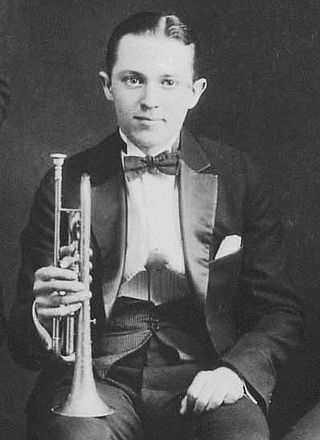
Leon Bismark "Bix" Beiderbecke was an American jazz cornetist, pianist and composer.
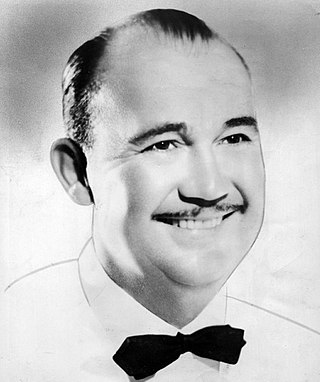
Paul Samuel Whiteman was an American bandleader, composer, orchestral director, and violinist.

Eddie Lang was an American musician who is credited as the father of jazz guitar. During the 1920s, he gave the guitar a prominence it previously lacked as a solo instrument, as part of a band or orchestra, and as accompaniment for vocalists. He recorded duets with guitarists Lonnie Johnson and Carl Kress and jazz violinist Joe Venuti, and played rhythm guitar in the Paul Whiteman Orchestra and was the favoured accompanist of Bing Crosby.
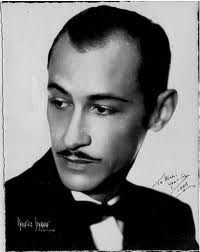
Orie Frank Trumbauer was an American jazz saxophonist of the 1920s and 1930s. His main instrument was the C melody saxophone, a now-uncommon instrument between an alto and tenor saxophone in size and pitch. He also played alto saxophone, bassoon, clarinet and several other instruments.
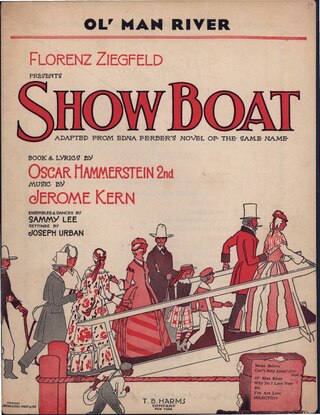
"Ol' Man River" is a show tune from the 1927 musical Show Boat with music by Jerome Kern and lyrics by Oscar Hammerstein II, who wrote the song in 1925. The song contrasts the struggles and hardships of African Americans with the endless, uncaring flow of the Mississippi River. It is sung from the point of view of a black stevedore on a showboat, and is the most famous song from the show. The song is meant to be performed in a slow tempo; it is sung complete once in the musical's lengthy first scene by the stevedore "Joe" who travels with the boat, and, in the stage version, is heard four more times in brief reprises. Joe serves as a sort of musical one-man Greek chorus, and the song, when reprised, comments on the action, as if saying, "This has happened, but the river keeps rolling on anyway."

King of Jazz is a 1930 American pre-Code color musical film starring Paul Whiteman and his orchestra. The film title refers to Whiteman's popular cultural appellation. At the time the film was made, "jazz", to the general public, meant jazz-influenced syncopated dance music heard on phonograph records, on radio broadcasts, and in dance halls. In the 1920s Whiteman signed and featured white jazz musicians including Joe Venuti and Eddie Lang, Bix Beiderbecke, Frank Trumbauer, and others.
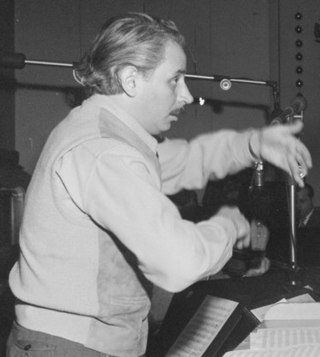
Leonard George Hayton was an American musician, composer, conductor and arranger. Hayton's trademark was a captain's hat, which he always wore at a rakish angle.

The Rhythm Boys were an American male singing trio consisting of Bing Crosby, Harry Barris and Al Rinker. Crosby and Rinker began performing together in 1925 and were recruited by Paul Whiteman in late 1926. Pianist/singer/songwriter Barris joined the team in 1927. They made a number of recordings with the Whiteman Orchestra and released singles in their own right with Barris on piano. They appeared with the Whiteman orchestra in the film King of Jazz, in which they sang "Mississippi Mud", "So the Bluebirds and the Blackbirds Got Together", "A Bench in the Park", and "Happy Feet". They are best remembered for launching Crosby's solo career, one that would make him the greatest song charting act in history and one of the most influential entertainers of the twentieth century.

Harry Barris was an American popular singer and songwriter. He was one of the earliest singers to use "scat singing" in recordings. Barris, one of Paul Whiteman's Rhythm Boys, along with Bing Crosby and Al Rinker, scatted on several songs, including "Mississippi Mud," which Barris wrote in 1927.

Al Rinker was an American musician who began his career as a teen performing with Bing Crosby in the early 1920s in Spokane, Washington. In 1925 the pair moved to Los Angeles, eventually forming the Rhythm Boys trio with Harry Barris.
Joseph Anthony "Fud" Livingston was an American jazz clarinetist, saxophonist, arranger, and composer.

"Way Down Yonder in New Orleans" is a popular song with music by John Turner Layton Jr. and lyrics by Henry Creamer. First published in 1922, it was advertised by Creamer and Layton as "A Southern Song, without A Mammy, A Mule, Or A Moon", a dig at some of the Tin Pan Alley clichés of the era.

Bix is a 1991 Italian drama film directed by Pupi Avati and starring Bryant Weeks. The plot is about the final years of cornet player Bix Beiderbecke. It was entered into the 1991 Cannes Film Festival.
Irene Taylor (1906–1988) was an American singer best known for her recorded work with Paul Whiteman. She was married to singer and bandleader Seger Ellis.
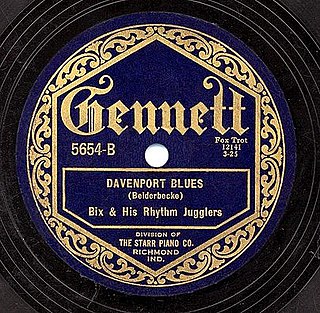
Davenport Blues is a 1925 song composed and recorded by Bix Beiderbecke and released as a Gennett 78. The song has become a jazz and pop standard.
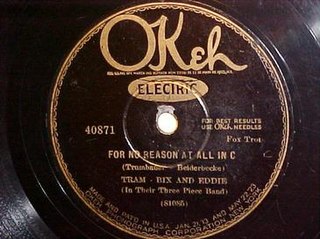
"For No Reason at All in C" is a 1927 jazz instrumental by Bix Beiderbecke, Frankie Trumbauer, and Eddie Lang. The song was released as a 78 single in 1927 on Okeh Records as by "Tram, Bix and Eddie ".
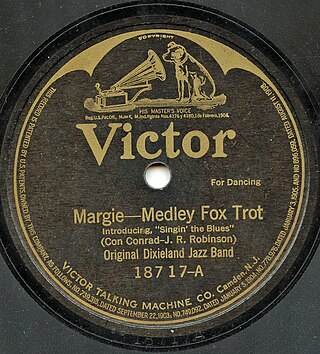
"Singin' the Blues" is a 1920 jazz composition by J. Russel Robinson, Con Conrad, Sam M. Lewis, and Joe Young. It was recorded by the Original Dixieland Jass Band in 1920 as an instrumental and released as a Victor 78 as part of a medley with "Margie". The song was released with lyrics by vocalist Aileen Stanley in 1920 on Victor. In 1927, Frank Trumbauer, Bix Beiderbecke, and Eddie Lang recorded and released the song as an Okeh 78. The Trumbauer recording is considered a jazz and pop standard, greatly contributing to Frank Trumbauer and Bix Beiderbecke's reputation and influence. It is not related to the 1956 pop song "Singing the Blues" first recorded and released by Marty Robbins in 1956.
"Louise" is a song written by Leo Robin and Richard A. Whiting for the 1929 film Innocents of Paris, where it was performed by Maurice Chevalier. The song was Chevalier's first hit in the United States, and was among the best selling records for 10 weeks in the summer of 1929. Chevalier recorded the song again in 1946 with Henri René's Orchestra for RCA Victor.

John Collins Fulton was an American composer, trombonist, and vocalist. At the age of 17, he started playing the trombone for small-town dances. He sang with the Mason-Dixon Orchestra. He also played the trombone and sang with the George Olsen Orchestra. He was part of the trio that sang on the 1925 number one hit "Who?" The other vocalists were Bob Rice and Fran Frey.
"I'm Coming Virginia" is a song composed in 1926 by Donald Heywood with lyrics by Will Marion Cook. It is often wrongly attributed to vocalist Ethel Waters, who first recorded it on September 18, 1926, with Will Marion Cook's Singing Orchestra. Waters is credited with popularizing it. Cornetist Bix Beiderbecke, pianist Fats Waller and the Paul Whiteman Orchestra featuring Bing Crosby all recorded it in 1927. The song has become a jazz standard performed by Dixieland musicians.